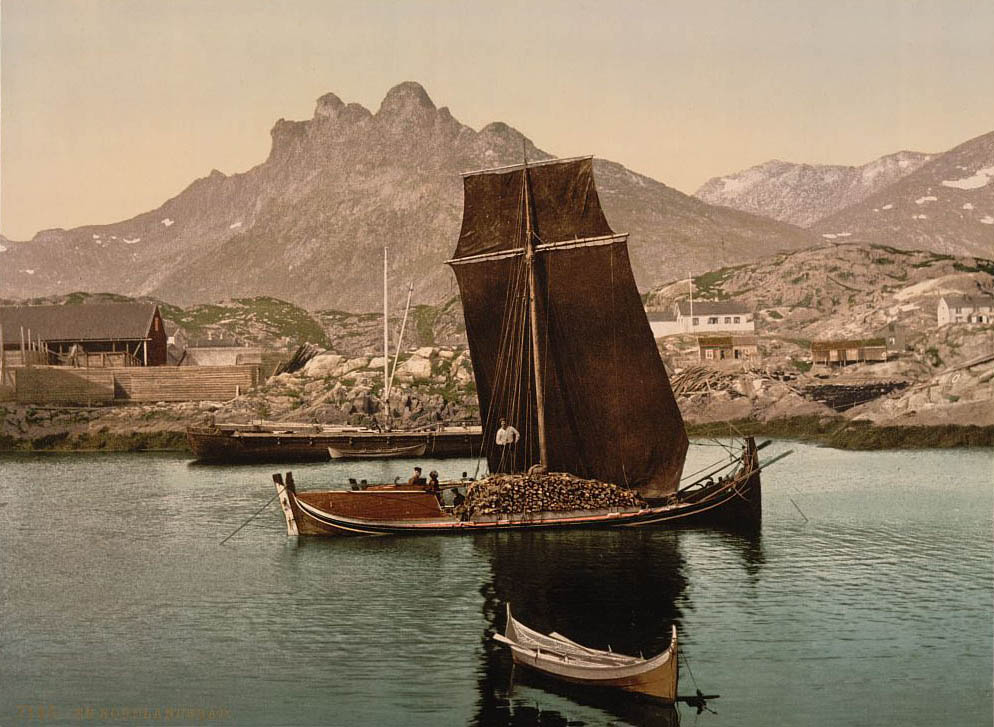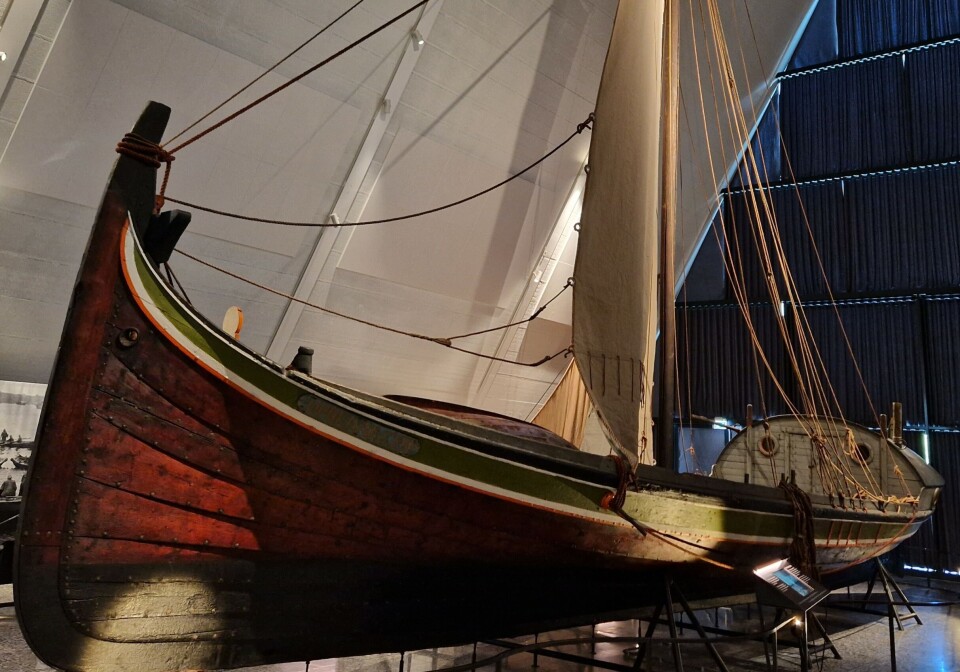Service History
The
Ole Bull was a sloop built in Milwaukee in 1853. The sloop was named for Ole Bornemann or "Ole Bull", the famous virtuoso Norwegian violinist and composer. After the vessels completion, the owner William Woodruff and others had sent letters to Bornemann in Norway informing him that the sloop was built and named in his honor. The vessel was described as being "a clinker built boat much like a double ender Norwegian fishing boat." and "She has no bow or bowsprit, nor any stern to speak of. She is about as broad as she is long. Her particular merit seems to lie in being able to move with equal ease in any direction, without turning around. She is unequalled like her great namesake.". The
Ole Bull was owned by a William Woodruff and Captained by a Captain Larsen. The
Ole Bull would have resembled a Nordlandboat or a miniature Viking longboat.
The
Ole Bull's maiden voyage was bringing 60 tons of pig iron from Milwaukee to Chicago, Illinois on 10 May 1853. The vessel was unpainted and it was thought that a coat of paint was going to be applied while the sloop was in Chicago. The
Ole Bull then departed Chicago to Manistee, Michigan and brought a cargo of shingle bolts to Milwaukee on 18 May. The sloop then sailed from Milwaukee to White Lake, Michigan for 41,000 feet of lumber to Milwaukee arriving on 3 June.
Ole Bull would depart Milwaukee again on 10 June for Manistee and would arrive back in Milwaukee with a cargo of shingles on 13 June. The sloop would then be at the center of controversy when on 3 August when Milwaukee Sheriff Connover and Constable Burke arrested three men on suspicion of breaking into a barn and stealing harnesses, two saddles, a new bridle, and other articles owned by a Dr. Orton. It was supposed that the stolen articles were placed aboard the
Ole Bull before it departed for Manistee the day before on 2 August. When the sloop returned from White Lake on 15 August Captain Larsen emphatically contradicted the allegations in the press. Captain Larsen "Has the reputation of being an honest man.".
Ole Bull would depart Milwaukee for White Lake again on 18 August. On 22 October
Ole Bull arrived in Milwaukee from Clay Banks in Door County, Wisconsin with 36 cords of bolts. The
Ole Bull started its 1854 season by departing Milwaukee for Chicago with a load of 44,000 cream city bricks on 21 March, it would return to Milwaukee again on 28 March. On 14 April
Ole Bull would arrive in Milwaukee from Duck Lake, Michigan with 36 cords of bolts. The sloop would depart again on 17 April for Muskegon.
Ole Bull would arrive in Milwaukee on 27 April from Duck Lake with another cargo of 37 cords of bolts.
On 5 May
Ole Bull would depart Milwaukee for Clay Banks, arrive in Milwaukee on 10 May and depart again for Muskegon, Michigan on 13 May. The sloop would return to Milwaukee from Muskegon on 16 May with 38 cords of bolts.
Ole Bull would depart again for Clay Banks on 23 May and return to Milwaukee with a cargo 150 m. shingles and 24 cords bolts on 26 May. The busy sloop would depart again on 27 May for Muskegon and arrive in Milwaukee from Duck Lake on 3 June with a cargo of 38 cords of bolts.
Ole Bull would depart for Muskegon on the same day. The busy
Ole Bull would not be mentioned in the newspapers for June or July, but in on 21 August the sloop would arrive in Milwaukee from Stony Creek, Wisconsin with 37 cords of bolts. A month later on 11 October the vessel arrive in Milwaukee from Muskegon with a cargo of 40 m lumber and 30 m laths, the
Ole Bull would depart Milwaukee for Muskegon on 28 October.
Final Voyage
On 21 January 1855,
Ole Bull was tied up at the old entrance to the mouth of the Milwaukee River for the winter, when during a massive gale where "strong buildings rocked like a tree top and snow was piled up like mountains on land", the sloop alongside the schooner
Union broke loose from their moorings and drifted out into Lake Michigan. Additionally the schooner
Lady Ann of Racine and "Mr. Durfee's (or Dukee) steam dredge" of Chicago were all blown out into the lake during the same storm. It was supposed at the time that these were blown clear across the lake to Michigan, but "none could get within a mile or two of the Michigan shore, the ice extending that far out into the Lake, and being piled up in some places, 20 and 80 feet high.". Undeterred by this
Ole Bull's owner William Woodruff was optimistic about the sloop as being located further north had a comparatively clear lake than the other missing ships. Captain Larsen of the
Ole Bull searched around Lake Michigan as far as Michigan City, Indiana as there was a rumor that all the missing ships were blown to the southern end of the lake. Captain Larsen returned to Milwaukee empty-handed on 7 February 1855.
The
Ole Bull was allegedly spotted drifting and trapped in ice mid-lake, by Captain Easson of the
Lady Ann, which was blown across Lake Michigan in the same gale on 21 January 1855. This was when the
Lady Ann was making its harrowing journey back to Chicago after being trapped in ice off New Buffalo, Michigan. The sloop
Ole Bull was "retired to Davy Jones' Locker".



 Confirmed Location
Confirmed Location
 Unconfirmed location
Unconfirmed location